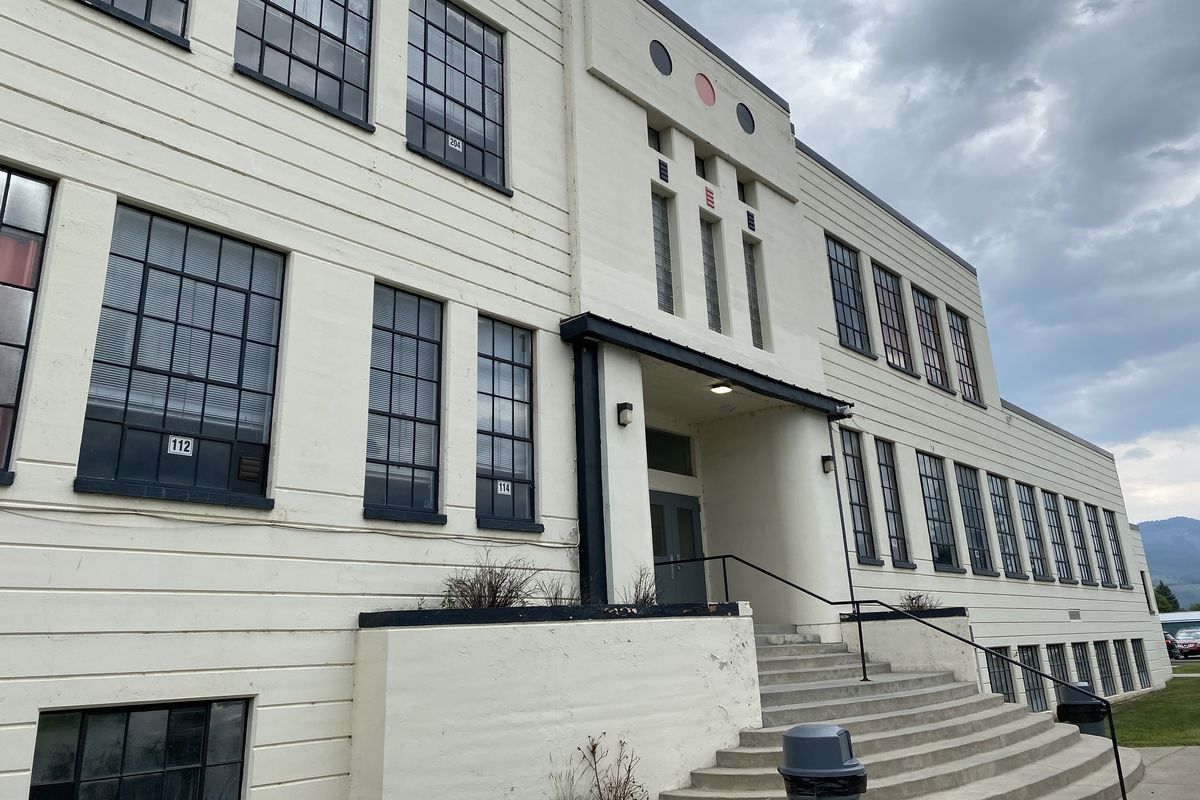West Bonner closes Priest River Jr. High for one year, keeps elementary schools open

PRIEST RIVER, Idaho – At the end of a five-hour discussion Wednesday night, the West Bonner School Board decided against closing two elementary schools and will instead close the junior high next school year as a stopgap while the district comes up with a longer-term plan to deal with its budget shortfall.
The roughly 150 seventh- and eighth-graders will attend Priest River Lamanna High School half a mile away.
Voters in the district rejected a $4.6 million levy last month, and a similar measure failed a year ago. The district scraped through this school year by using the last of its federal COVID-19 pandemic emergency funding.
Some parents at the meeting opposed the idea of combining the two schools, worrying about bullying and comingling of older boys with younger girls.
High school principal Matt George said it would be feasible to segregate the lower grades in the building with separate hallways, adding partitions in a few places including locker rooms, and rotating teachers instead of students to different classrooms for different subjects.
This would “create a school within a school,” which is a common practice. The majority of high schools in Idaho are 7-12, George said.
“This is not a new concept,” George said. “I can’t promise that there would be no mixing, but we can greatly reduce it.”
George said there would be more opportunities for advanced junior high students to take higher-level classes, which the high school has offered in the past.
District administration presented the board numerous options for different combinations of school closures. The most drastic option would have also closed the two outlying elementary schools: Priest Lake Elementary about 30 miles north, and Idaho Hill Elementary in Oldtown.
Parents and teachers worried about longer bus rides and overcrowding for younger children.
Elementary parents also warned of the danger of alienating the outlying areas, where voters would be less likely to support future levies and parents would be more likely to homeschool their kids.
Special Education Director Kristina Kenny said that keeping the elementary schools and classes small is important for child development.
The combined school at Priest River Elementary would have increased to 500 students with up to 27 kids in a first-grade class.
“Little kids need small group instruction; they need individual instruction,” Kenny said.
Closing three schools would have allowed the district to cut 13 certified teacher positions. Salaries are the largest costs associated with leaving schools open.
Interim Superintendent Joe Kren said the administration has not determined how many positions will be reduced now, but it will be fewer than 13.
The district will need to dip into its reserves to balance the budget and will have less than $1 million in the fund balance, finance director Dean Davis said.
The board discussed the possibility of moving the district offices into one of the other schools and selling or leasing the office building. Savings or revenue from this option would likely not be felt until the following fiscal year.
Built in 1940, the junior high building is the former high school. It is listed on the National Register of Historic Places and holds sentimental value for the community. The building is in bad shape, however.
It is the most expensive building for the district to heat and maintain, since it has poor insulation and an 84-year-old boiler. Costs of renovating the building were estimated at $16 million a few years ago – an amount the district does not have and will not for the foreseeable future.
Besides staff salaries, the district will save some maintenance and operations costs by keeping it closed, but the building still needs to be heated through the winter to protect the pipes.
The board discussed keeping the school’s athletic facilities open for continued use.
Operations director Ryan Carruth urged the board to come up with a long-term plan for the building rather than continue to kick the can down the road.
Board Chair Margaret Hall emphasized that the closure is a one-year decision.
The board is seeking additional funding through grants and establishing an endowment fund. Some community members pledged to donate what they would have paid with the levy.
Thursday was the district’s last day of school.